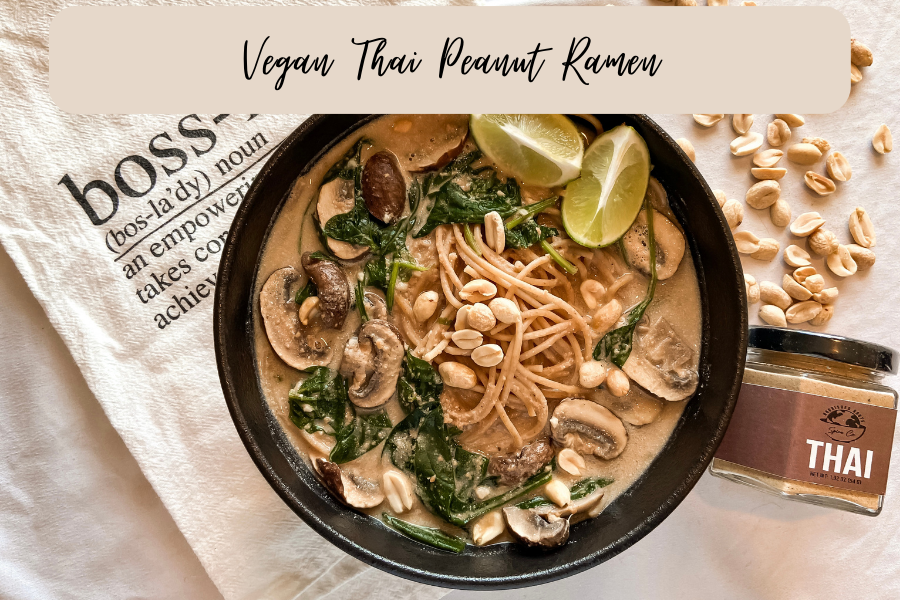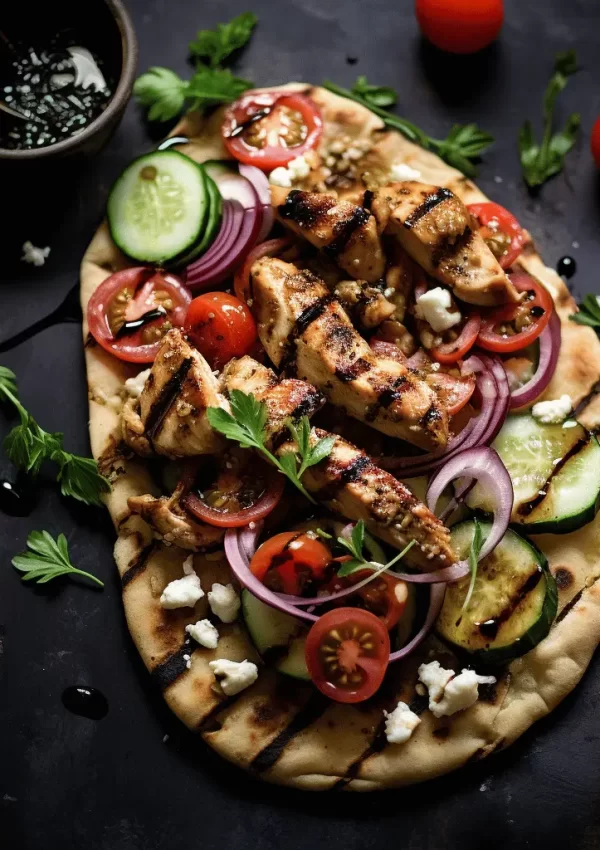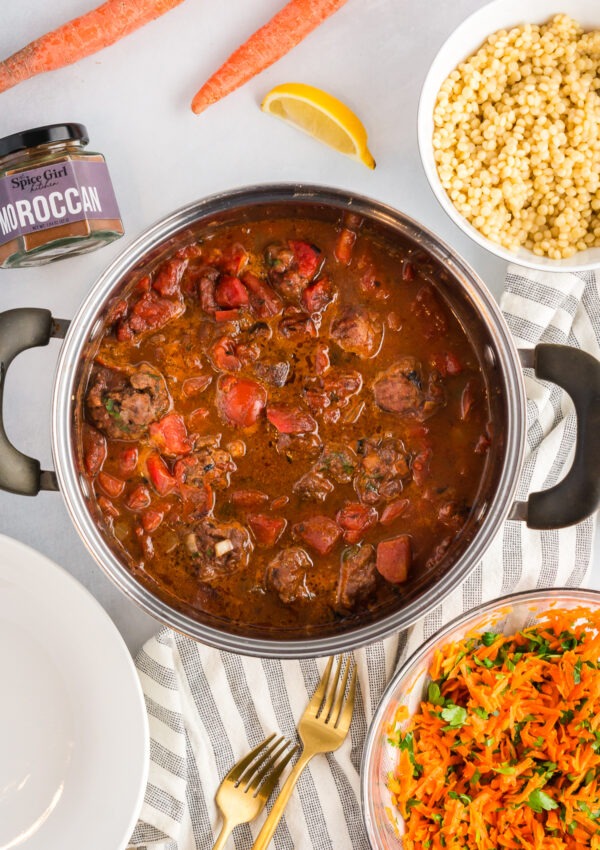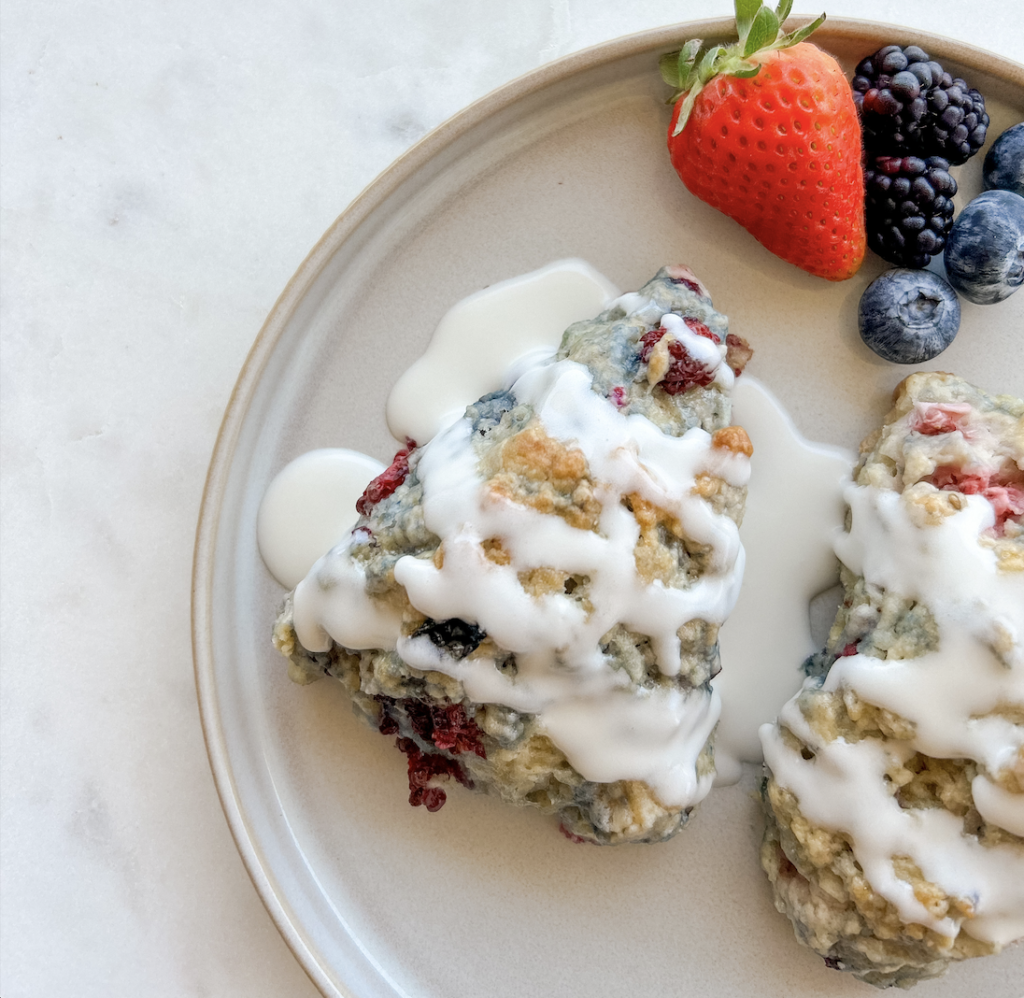This Vegan Thai Peanut Ramen is the definition of comfort food. This recipe packs 24 grams of plant-based protein and comes together in just 35 minutes.
This post contains affiliate links, which means I’ll receive a commission if you purchase through my link, at no extra cost to you. Please read the full disclosure here.
In this recipe, I use my salt-free Thai spice blend from my spice company – The Spice Girl Kitchen. I’m completely biased because it is, after all, my spice recipe and the best Thai seasoning on the market. But feel free to use whatever Thai seasoning you have on hand. Or, omit it altogether! It just adds a little somethin’!
My Thai seasoning is unlike anything on the market because it contains peanut butter powder. It smells like Thai Peanut Sauce in a seasoning, what’s not to love about that?!
In this post, you will learn how to make the best vegan Thai peanut ramen. Plus, we will learn all about chickpea pasta and fish sauce, get a brief nutritional breakdown, and end with storage & reheating information.
This post is all about Vegan Thai Peanut Ramen!
Chickpea Pasta
What is it?
Chickpea pasta is exactly what it sounds like – pasta made out of chickpeas! I LOVE chickpea pasta because it contains 50% more protein and 3x more fiber than regular pasta, but it tastes and cooks the same!
Pasta Swap
I have tried every pasta swap that exists. I can say with full confidence that chickpea pasta is my favorite pasta alternative. Don’t get me wrong, I love spaghetti squash if you are looking for a lighter, low-carb pasta swap. Spaghetti squash is perfect if you are looking to add more veggies to your diet (which is always a good idea). The drawback to spaghetti squash is the lack of protein.
For the sake of this recipe, if you are a vegan – I recommend sticking with chickpea pasta since it provides the bulk of the protein (but I highly recommend including spaghetti squash in other parts of your diet)!
Banza pasta is my favorite chickpea pasta brand. They have every pasta shape and the texture is the closest to regular pasta compared to other chickpea pasta brands. For ramen, I recommend using angel hair.
[the_ad id=”3378″]
Fish Sauce
What is fish sauce?
In short, it’s a condiment made from fermenting fish in salt for several months. It is a staple ingredient in many Southeast Asian cuisines.
How is it made?
Fish sauce is typically made by combining anchovies (or other small, oily fish) with salt and allowing it to ferment over several months. During fermentation, enzymes and bacteria break down the proteins and produce a liquid that is rich in umami flavor.
Fish Sauce & Thai Cuisine
Fish sauce is a key ingredient in many Thai dishes. It is what gives Thai food its signature umami flavor. Fish sauce is added to stir-fries, curries, dipping sauces, and pad Thai. It provides a strong, depth of flavor in Thai cuisine.
Where can I find it?
While you can absolutely find it at international or specialty groceries, I have also found fish sauce at Whole Foods, Sprouts, Crest, and Walmart! Ask your local grocery, you may be surprised! You can also order it online – I used Thai Kitchen’s Fish Sauce in today’s recipe! Warning: a little goes a LONG way!
[the_ad id=”3378″]
Nutritional Breakdown
This is going to be a *quicker* nutrition breakdown today – so let’s hit the basics.
Per serving, this recipe contains:
- 574 calories
- 34.4 g fat
- 51 g carbs
- 24 g protein
- 8 g of fiber
This recipe is definitely higher in fat – but that doesn’t mean it is unhealthy! It packs 24 g of plant-based protein (mostly coming from chickpea pasta) and 8 g of fiber (from the mushrooms, spinach, and pasta). If you wanted a lower carb option, you could sub the chickpea pasta for zucchini noodles or spaghetti squash – but just keep in mind that you would also be omitting most of the protein with that swap.
[the_ad id=”3378″]
Store & Reheat
As a general rule of thumb, ramen tends to store and reheat well because the liquid helps it retain its flavor and quality. Just one more reason to love this recipe!
Store
Fridge: Transfer ramen to a large glass storage container with an airtight lid. Allow it to cool to room temperature before securing the lid (about 30-45 minutes; the exact time depends on the amount of ramen). Store in the fridge for up to 4 days.
Freezer: You can also freeze the ramen for up to 3 months. Place the ramen in the fridge to thaw overnight for best results.
Reheat
Microwave: Place ramen in a microwave-safe dish, cover, and microwave on high for 1-3 minutes or until heated through. Stir halfway through to warm it evenly.*
Stovetop: Place ramen in a pot over medium heat. Once the ramen is simmering, reduce to medium-low and cover for 3-5 minutes or until heated through. Stir occasionally.*
Oven: Not recommended.
* Total time depends on the amount you are reheating.
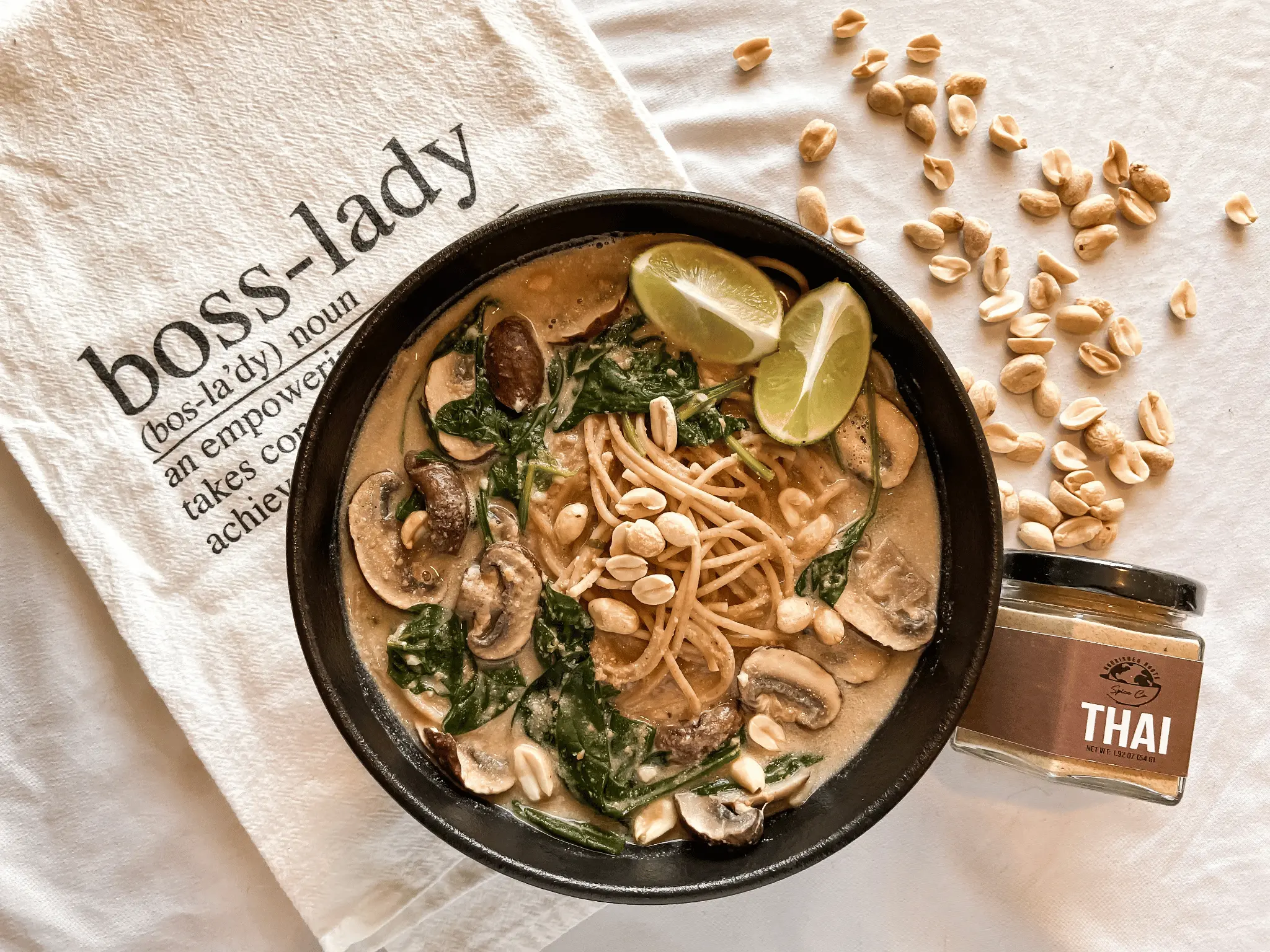
Vegan Thai Peanut Ramen
Ingredients
Method
- In a large pot, cook pasta according to package directions, strain, and set aside.
- In the same pot over medium-high heat, add garlic and ginger paste with a splash of veggie broth so it doesn't stick. Sautee for 1-2 minutes.
- Add in fish sauce, veggie broth, coconut milk, peanut butter, lime juice, and Thai spice. Whisk together until combined. Bring to a gentle boil then reduce to a simmer. Simmer for 5 minutes.
- Add in mushrooms and simmer an additional 5 minutes, until mushrooms are tender. Add in spinach and salt to taste, cook 1 additional minute (until spinach is wilted). Remove from heat. Stir in pasta
- Serve in bowls. Garnish with limes and peanuts. Enjoy!
Notes
Store & Reheat
As a general rule of thumb, ramen tends to store and reheat well because the liquid helps it retain its flavor and quality. Just one more reason to love this recipe!Store
Fridge: Transfer ramen to a large glass storage container with an airtight lid. Allow it to cool to room temperature before securing the lid (about 30-45 minutes; the exact time depends on the amount of gumbo). Store in the fridge for up to 4 days. Freezer: You can also freeze the ramen for up to 3 months. Place the ramen in the fridge to thaw overnight for best results.Reheat
Microwave: Place ramen in a microwave-safe dish, cover, and microwave on high for 1-3 minutes or until heated through. Stir halfway through to warm it evenly.* Stovetop: Place ramen in a pot over medium heat. Once the ramen is simmering, reduce to medium-low and cover for 3-5 minutes or until heated through. Stir occasionally.* Oven: Not recommended. * Total time depends on the amount you are reheating.This post was all about Vegan Thai Peanut Ramen!
Did you make this recipe? Make sure to tag me @thespicegirlkitchen_ on Instagram or @thespicegirlkitchen on TikTok! I love seeing your recreations! I will be your ultimate hype woman!
Want to learn more about Kelsey? Click here to read her story!

